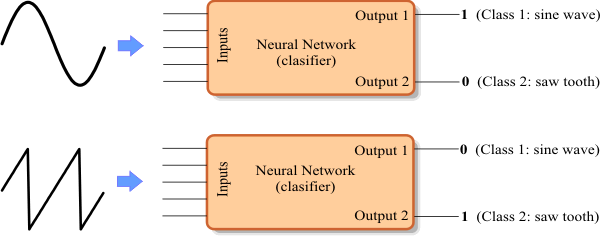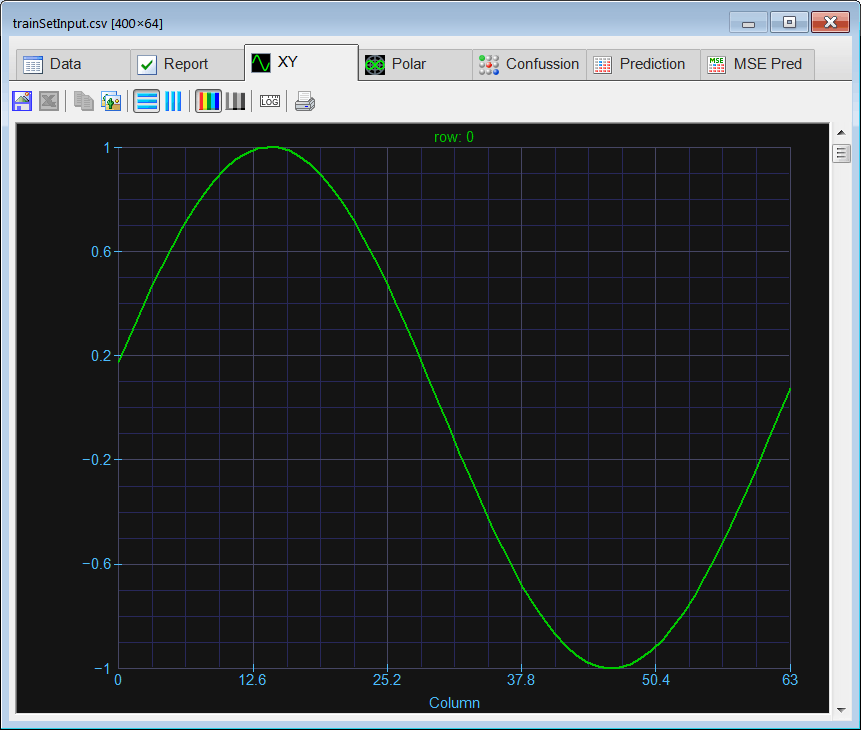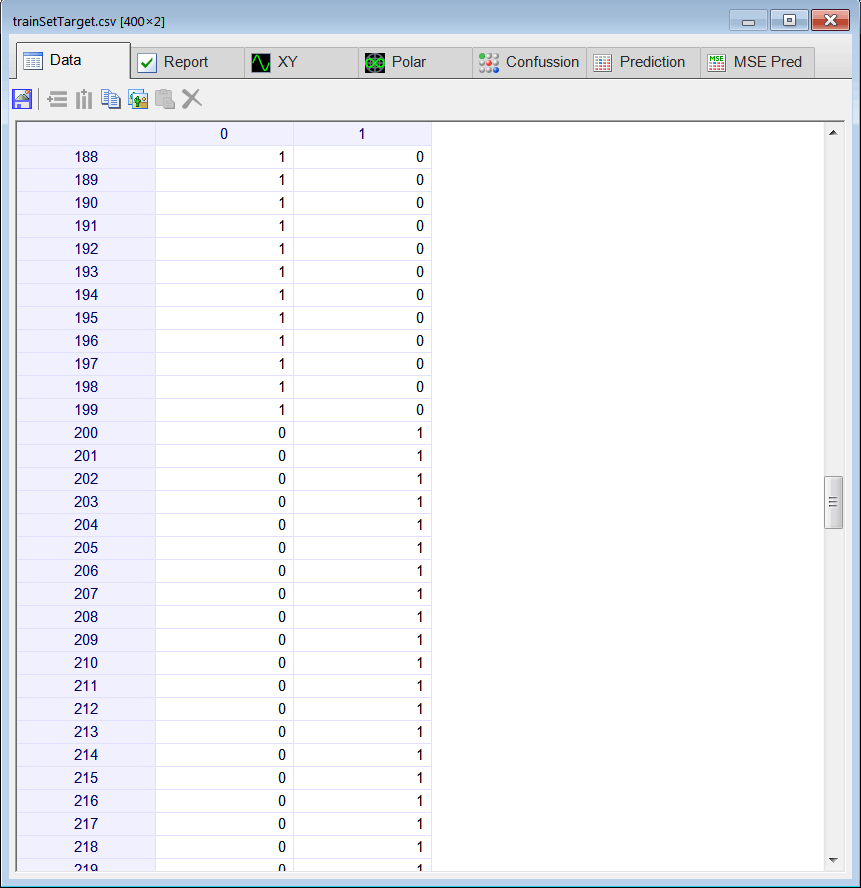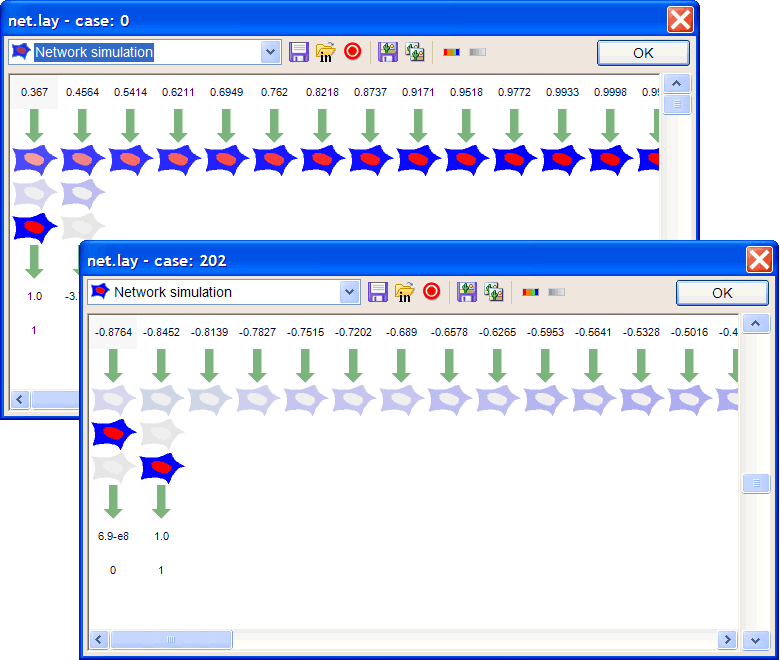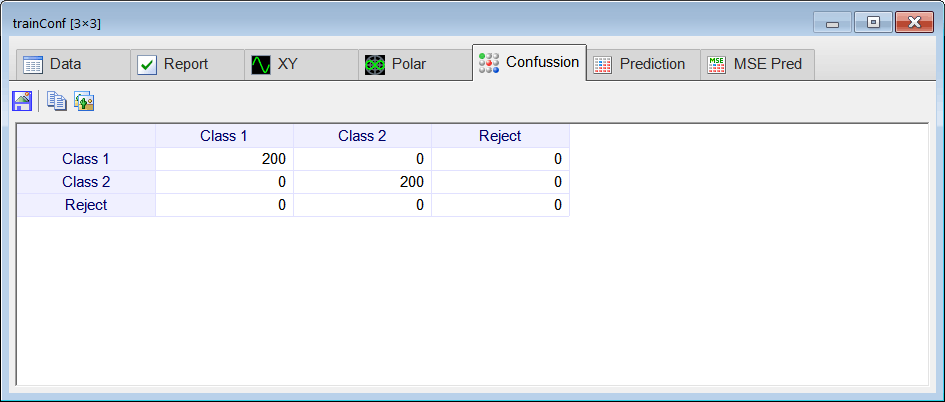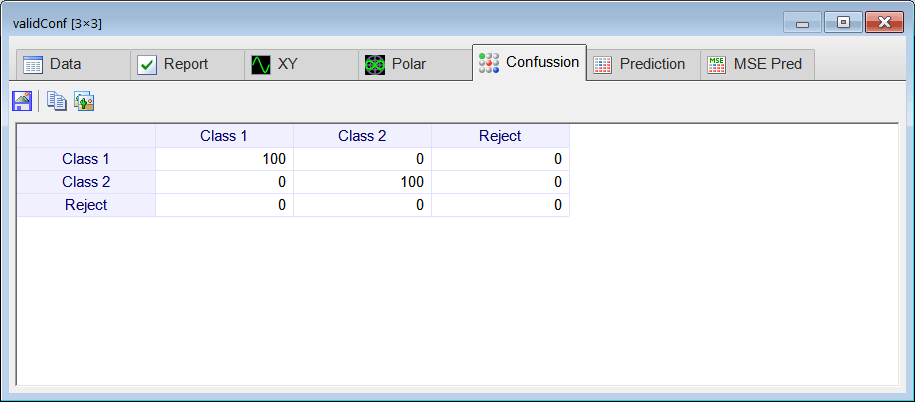//________________________________ 1. Network Setup
LayerNet net;
net.Create(64, 2, 0, 2); // 2 Outputs means 2 Classes
int i = 0;
//________________________________ 2. Input Scaling
for(i = 0; i<64; i++)
{
net.SetInScaler(i, -1.0, 1.0); // Input values are from -1 to 1
}
//_________________________________ 3. Output Scaling
net.SetOutScaler(0, 0.0, 1.0); // Output values are from 0 to 1
net.SetOutScaler(1, 0.0, 1.0); // Output values are from 0 to 1
//_________________________________ 4. Load and set the training set
Matrix trainSetInput;
trainSetInput.Load();
Matrix trainSetTarget;
trainSetTarget.Load();
net.SetTrainSet(trainSetInput, trainSetTarget, false);
//_________________________________ 5. Train
net.TrainSimAnneal(10, 10, 15, 0.01, true, 4, 1.0e-12);
net.TrainLevenMar(2000,1.0e-12);
//_________________________________ 6. Save the trained network
net.Save();
|
 Run click the button to execute the code. If you do not have any errors, the training set will be generated and displayed on the variable list and the file list. Click on the file to see its contents. The first 100 rows of the training set input are sine waves which random phase, the second 100 rows of the training set input are sawtooth waves. The training set target has two columns, the first column is for class 1 (the sine) and the second column is for class 2 (the saw tooth).
Run click the button to execute the code. If you do not have any errors, the training set will be generated and displayed on the variable list and the file list. Click on the file to see its contents. The first 100 rows of the training set input are sine waves which random phase, the second 100 rows of the training set input are sawtooth waves. The training set target has two columns, the first column is for class 1 (the sine) and the second column is for class 2 (the saw tooth). 